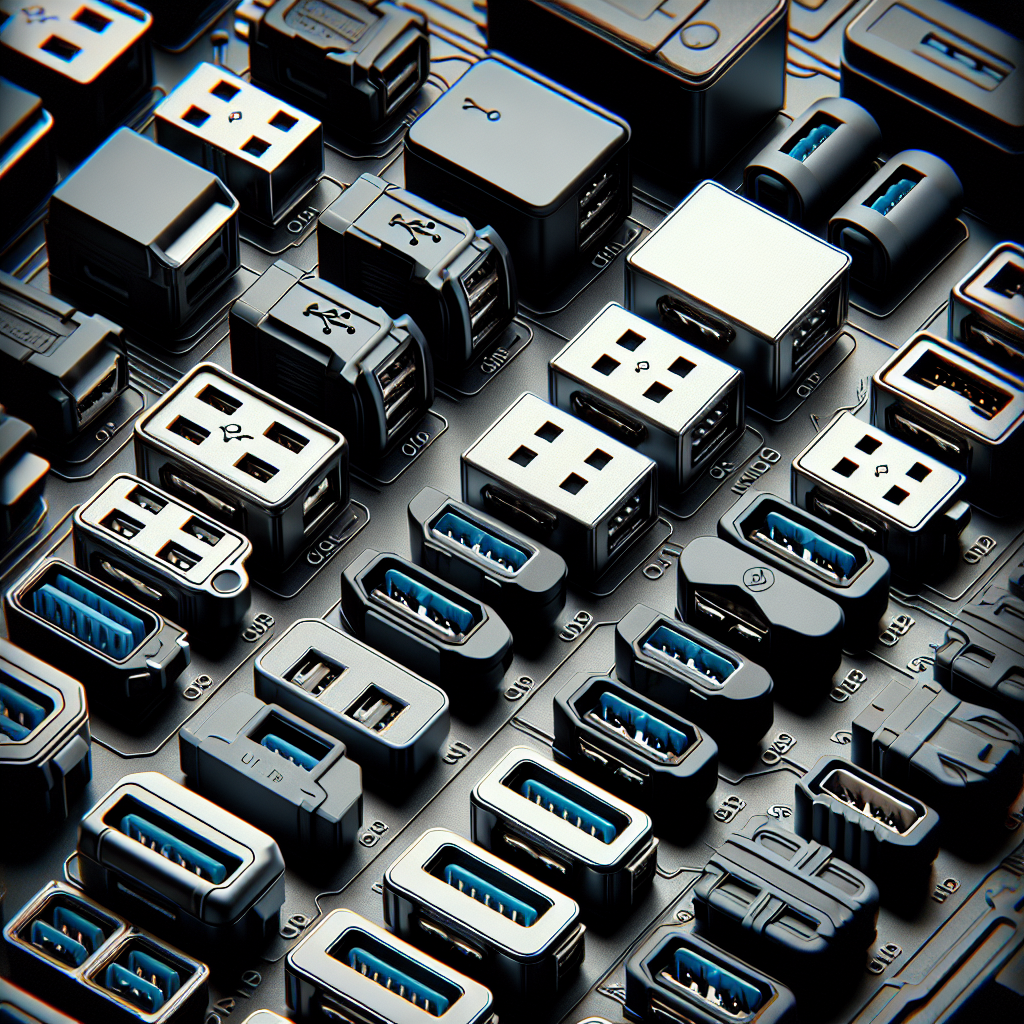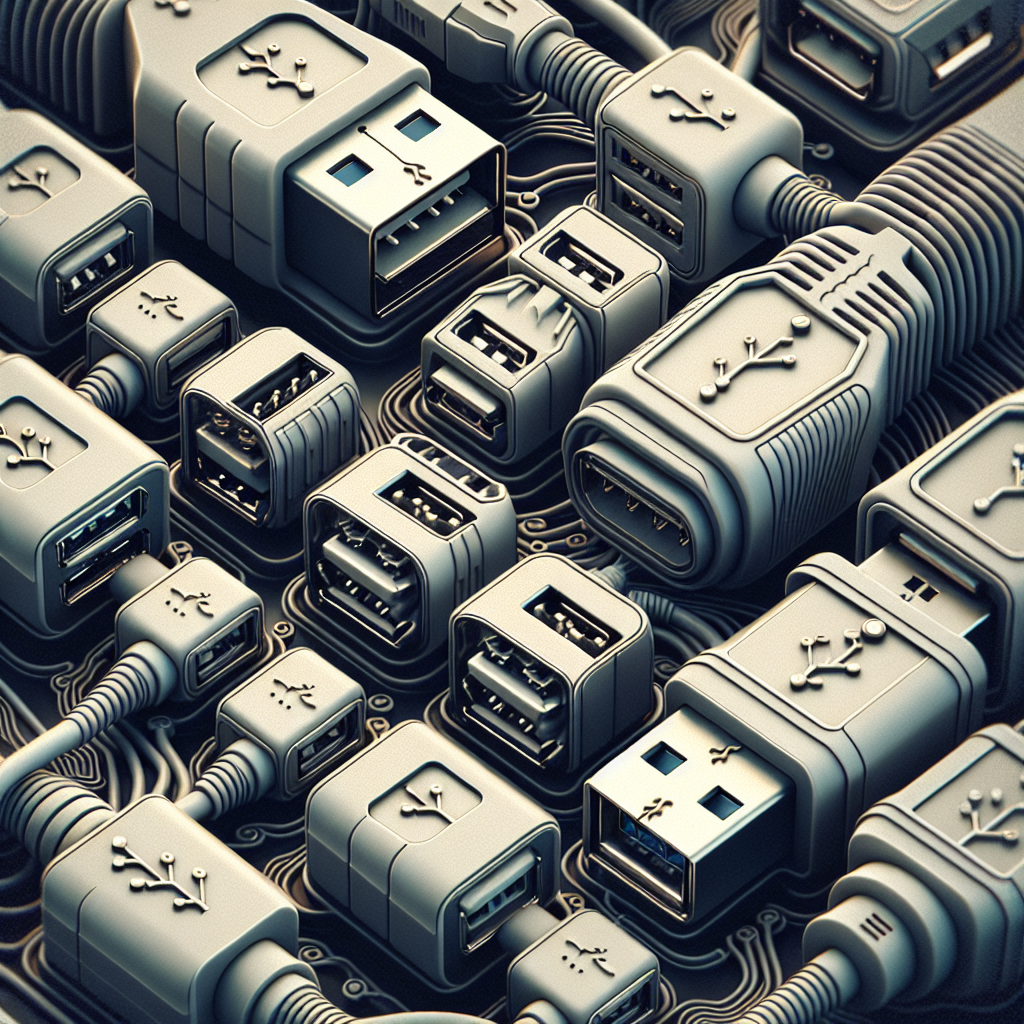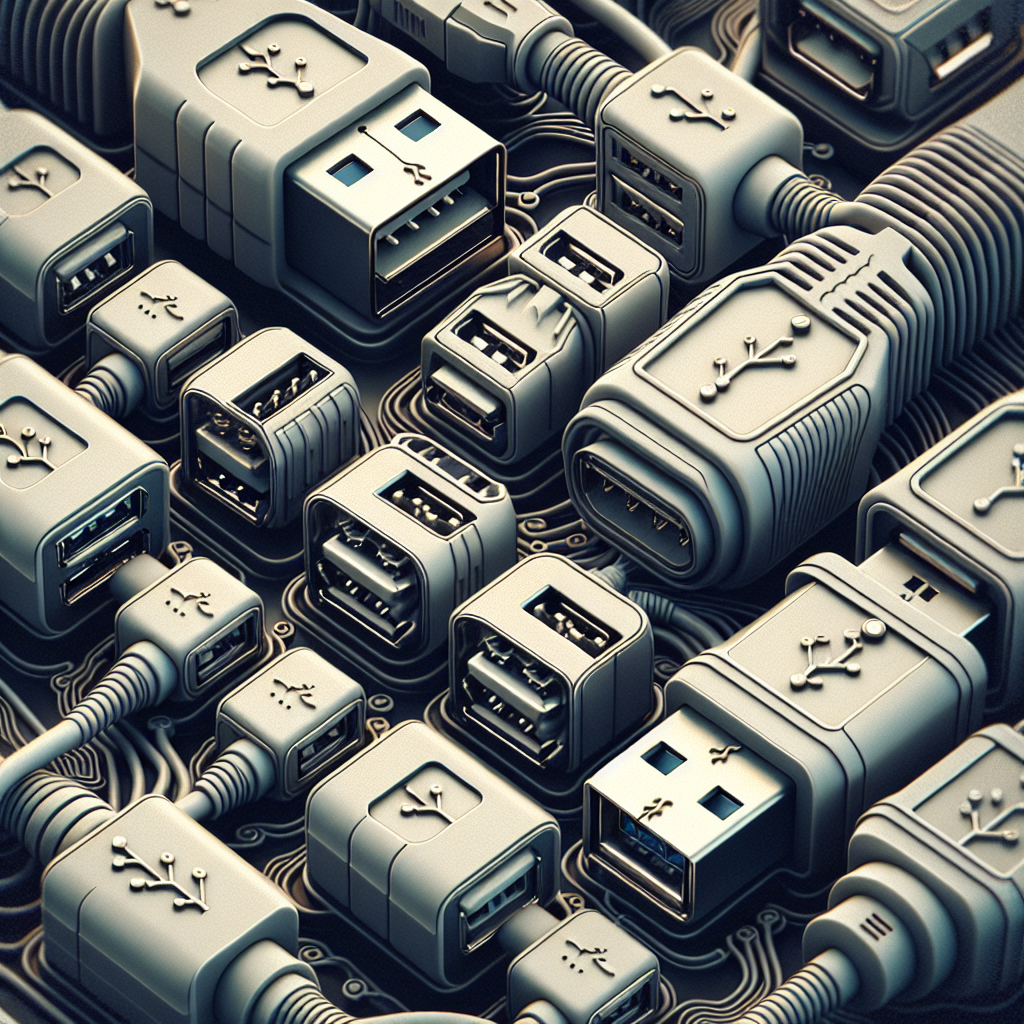Have you ever wondered how to effectively mount and connect storage devices like SSDs and HDDs? Look no further! This beginner’s guide will walk you through the step-by-step process of mounting and connecting these devices, ensuring that you have a seamless experience in expanding your storage capacity. Whether you’re a tech novice or an experienced user looking to refresh your knowledge, this guide will provide you with all the information you need to successfully connect and mount your storage devices. So, let’s get started on this exciting journey of expanding your storage capabilities!

Overview of Storage Devices
Storage devices are an essential component of any computer system, allowing users to store and retrieve their data effectively. These devices can be classified into two main types: Solid State Drives (SSDs) and Hard Disk Drives (HDDs). While both serve the same purpose of data storage, they differ in their technology and performance.
SSDs are the newer and more advanced type of storage devices. They utilize flash memory and have no moving parts, making them faster, more durable, and less prone to failure compared to HDDs. On the other hand, HDDs use spinning magnetic disks to store data, making them the traditional and more affordable option.
Types of Storage Devices
Within the category of SSDs, there are various types, including SATA SSDs, M.2 SSDs, and NVMe SSDs. Each type has its own physical connectors and interfaces, and they offer different levels of performance and compatibility with various systems.
HDDs, on the other hand, are available in different standard form factors such as 3.5-inch and 2.5-inch drives, with variations for desktop and laptop applications.
Common Storage Interfaces
To connect storage devices to a computer system, different storage interfaces are used. The most widely used interfaces include SATA (Serial ATA), PCIe (Peripheral Component Interconnect Express), and USB (Universal Serial Bus). SATA is commonly used for internal connections, while PCIe and USB are used for both internal and external connections.
Preparing for Mounting
Before you can mount a storage device, some preparation is necessary to ensure a smooth and successful installation. Here are some important steps to follow:
Selecting the Appropriate Storage Device
Determining the appropriate storage device for your needs is crucial. Consider factors such as storage capacity requirements, budget, and intended usage. SSDs are generally recommended for faster performance, while HDDs are more cost-effective for larger storage capacities.
Gathering Necessary Tools
To mount a storage device, you will typically need a Phillips screwdriver, an anti-static wrist strap, and possibly an adapter or enclosure if you are connecting the device externally. Make sure to gather these tools before starting the installation process.
Considering Storage Capacity Requirements
Calculating your storage capacity requirements is important to ensure you have enough space for your data. Consider factors such as the types of files you will be storing, the size of those files, and any future expansion needs. It is always better to have more storage capacity than to run out of space later.
Understanding Mounting
Mounting refers to the process of physically installing a storage device into a computer system, either internally or externally. Understanding the importance of mounting and the steps involved in the process is vital for a successful installation.
Definition of Mounting
Mounting, in the context of storage devices, involves attaching the device to a designated location within the computer system. This can be done by securing the device with screws or using specialized mounting brackets. Proper mounting ensures the stability and correct functioning of the storage device.
Importance of Mounting
Proper mounting of storage devices is important for several reasons. Firstly, it ensures a secure and stable connection, minimizing the risk of accidental disconnections or damage to the device. Additionally, proper mounting facilitates efficient airflow within the system, preventing overheating and prolonging the lifespan of the device.
Mounting Process Explained
The mounting process may vary depending on the type of storage device and the computer system. However, the general steps typically involve opening the computer case, identifying the appropriate mounting location for the device, connecting any necessary cables, securing the device with screws or brackets, and closing the computer case.
Mounting SSDs
Mounting SSDs requires specific considerations due to their different physical connectors and installation methods. Here are the steps involved in mounting SSDs:
Identifying SSD Physical Connectors
SSDs use various physical connectors, such as SATA, M.2, or PCIe. It is important to identify the specific connector used by your SSD to ensure compatibility with your system. The connector type will determine how the SSD is mounted and connected.
Installing SSD Internally
To mount an SSD internally, you need to locate the appropriate slot or connector on your motherboard. For SATA SSDs, this typically involves connecting the drive to a SATA data cable and a power cable. For M.2 SSDs, you will need to insert the SSD into the corresponding M.2 slot on the motherboard and secure it with a screw if required.
External SSD Mounting Options
If you prefer to connect your SSD externally, you have several options. One option is to use an external enclosure specifically designed for SSDs. These enclosures typically connect to your computer via USB or Thunderbolt interfaces, allowing you to access the SSD as an external drive. Another option is to use a docking station that allows easy insertion and removal of the SSD.

Mounting HDDs
Mounting HDDs is a relatively straightforward process compared to SSDs. Here are the steps involved in mounting HDDs:
Identifying HDD Physical Connectors
HDDs typically use SATA connectors for both data and power. Identify the appropriate SATA ports on your motherboard for data connection and locate the power connectors from your power supply unit.
Installing HDD Internally
To mount an HDD internally, you need to identify the appropriate mounting location within your computer case. Most cases have dedicated drive bays or brackets specifically designed for HDD installation. Simply slide the HDD into the bay, align the screw holes, and secure it in place using the provided screws.
External HDD Mounting Options
If you prefer to connect your HDD externally, you can use an external enclosure. These enclosures provide protection for the HDD and typically connect to your computer via USB or eSATA interfaces. External enclosures are a convenient option for portable storage or if you have spare HDDs that you want to use as secondary drives.
Connecting Storage Devices
Once you have successfully mounted your storage devices, it is important to establish the necessary connections to ensure proper data transfer and functionality.
Types of Storage Interfaces
Storage devices connect to a computer system using different storage interfaces. The most common interfaces include SATA, PCIe, and USB. SATA is primarily used for internal connections, while PCIe and USB are used for both internal and external connections.
Connecting SSDs and HDDs Internally
To connect SSDs and HDDs internally, you need to ensure they are properly connected to the appropriate data and power cables. For SATA devices, connect the SATA data cable to the motherboard and the power cable to the power supply unit. PCIe devices usually require connection to a PCIe slot on the motherboard.
External Storage Connection Options
If you are using external storage devices, such as SSDs or HDDs in enclosures, you can connect them to your computer system via USB, Thunderbolt, or eSATA ports. Simply plug the appropriate cable into the storage device and the corresponding port on your computer.
Using Adapters and Enclosures
Adapters and enclosures are additional tools that can enhance the functionality and convenience of storage device connections. Here is an overview of their usage:
Overview of Adapters and Enclosures
Adapters and enclosures are accessories that allow you to connect storage devices to different interfaces or convert between different form factors. Adapters can convert between interfaces such as SATA to USB, while enclosures provide a protective casing for internal drives to be used externally.
Usage Scenarios for Adapters and Enclosures
Adapters are useful when you need to connect a storage device with a different interface than your computer supports. For example, if your computer only has USB ports, but you want to connect an SSD with an M.2 interface, you can use an M.2 to USB adapter. Enclosures are beneficial when you want to repurpose an internal drive as an external drive without the need for extensive disassembly.
Connecting and Setting Up Adapters and Enclosures
Connecting adapters and enclosures is typically a straightforward process. For adapters, simply plug one end of the adapter into the storage device and the other end into the corresponding port on your computer. Enclosures require inserting the drive into the enclosure, securing it if necessary, and connecting the enclosure to your computer via the provided interface cable.
Formatting and Partitioning
Before you can start using a newly installed storage device, you need to format and partition it. This process prepares the device for storing and organizing data effectively.
Differences Between Formatting and Partitioning
Formatting and partitioning are often used interchangeably, but they refer to different steps in preparing a storage device. Formatting involves creating a file system on the device, while partitioning involves dividing the device into separate logical partitions or sections.
Benefits and Drawbacks of Using Different File Systems
Different file systems offer varying features and compatibility. Popular file systems include NTFS, exFAT, and FAT32. NTFS supports large file sizes and offers advanced security features, but it may have limited compatibility with certain devices. exFAT is a more universally compatible file system, while FAT32 has some limitations on file size and partition size.
Step-by-Step Guide for Formatting and Partitioning
To format and partition a storage device, you can use built-in formatting tools provided by the operating system or third-party software. The process typically involves selecting the device, choosing the desired file system and partition scheme, and following the prompts to complete the formatting and partitioning process.
Optimizing Storage Performance
Optimizing storage performance is crucial for achieving faster data transfer rates and better overall system responsiveness. Here are some tips to improve storage performance:
Understanding Storage Performance Factors
Several factors affect storage performance, including the type of storage device, interface speed, file system choice, and disk fragmentation. SSDs generally offer faster performance compared to HDDs due to their lack of mechanical parts. The interface used can also impact performance, with PCIe providing higher speeds than SATA or USB.
Tips for Improving Storage Performance
To enhance storage performance, it is recommended to install the operating system and frequently accessed programs on an SSD for faster boot times and application loading. Regularly updating firmware and drivers for storage devices can also improve performance and compatibility. Additionally, optimizing the file system and defragmenting HDDs can help maintain efficient data storage.
Monitoring and Maintaining Storage Devices
Regularly monitoring the health and performance of storage devices is crucial for early detection of potential issues. Utilize built-in tools, such as SMART (Self-Monitoring, Analysis, and Reporting Technology), to monitor the status of your drives. It is also important to keep storage devices clean and free from dust, as excessive heat or dirt can contribute to drive failure.
Troubleshooting Storage Issues
Despite careful installation and maintenance, storage issues can occasionally arise. Here are some common storage problems and steps for troubleshooting:
Identifying Common Storage Problems
Common storage problems include disk errors, data corruption, slow performance, and unrecognized drives. These can be caused by various factors such as faulty connections, outdated drivers, or hardware failures. Identifying the specific issue is the first step towards resolving it.
Troubleshooting Steps for Storage Issues
When troubleshooting storage problems, starting with basic steps such as checking connections and cables is crucial. Ensure that all connections are secure and cables are properly seated. If the issue persists, updating drivers, firmware, or operating system patches may resolve compatibility or performance-related problems. Run diagnostic tools to detect and repair any disk errors.
Seeking Professional Assistance
If you are unable to identify or resolve a storage issue on your own, it may be necessary to seek professional assistance. Certified technicians and IT professionals have the expertise to diagnose and fix complex storage problems. They can provide further guidance or recommend replacement options if necessary.
In conclusion, understanding how to mount and connect storage devices is essential for effectively using them in your computer system. By following the appropriate steps, you can ensure a smooth installation process and optimize the performance of your storage devices for efficient data storage and retrieval. Remember to always take proper precautions, gather the necessary tools, and consider your specific requirements when selecting and mounting storage devices. Happy mounting and connecting!
